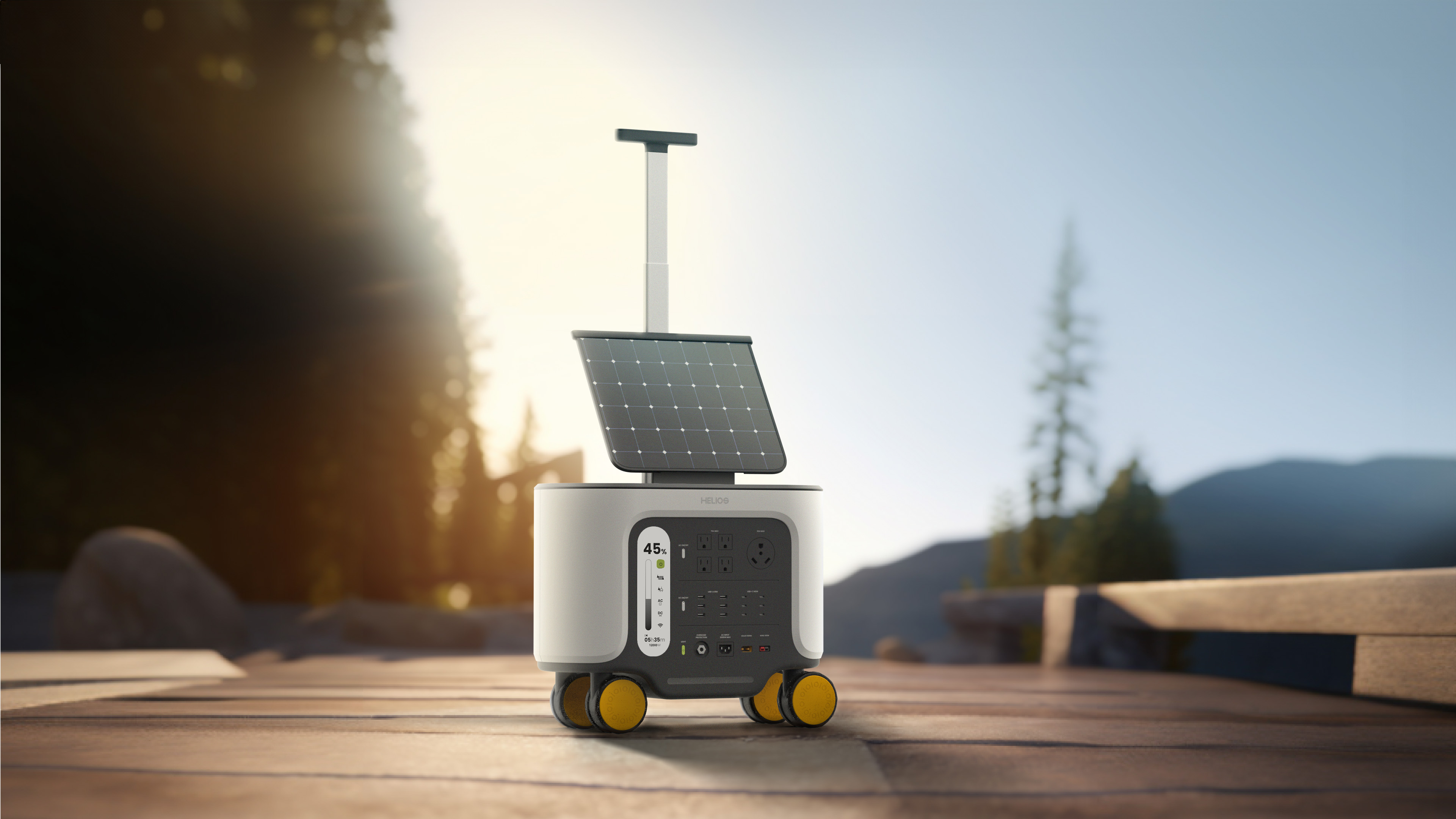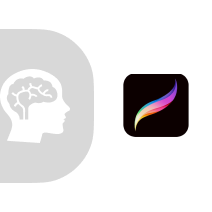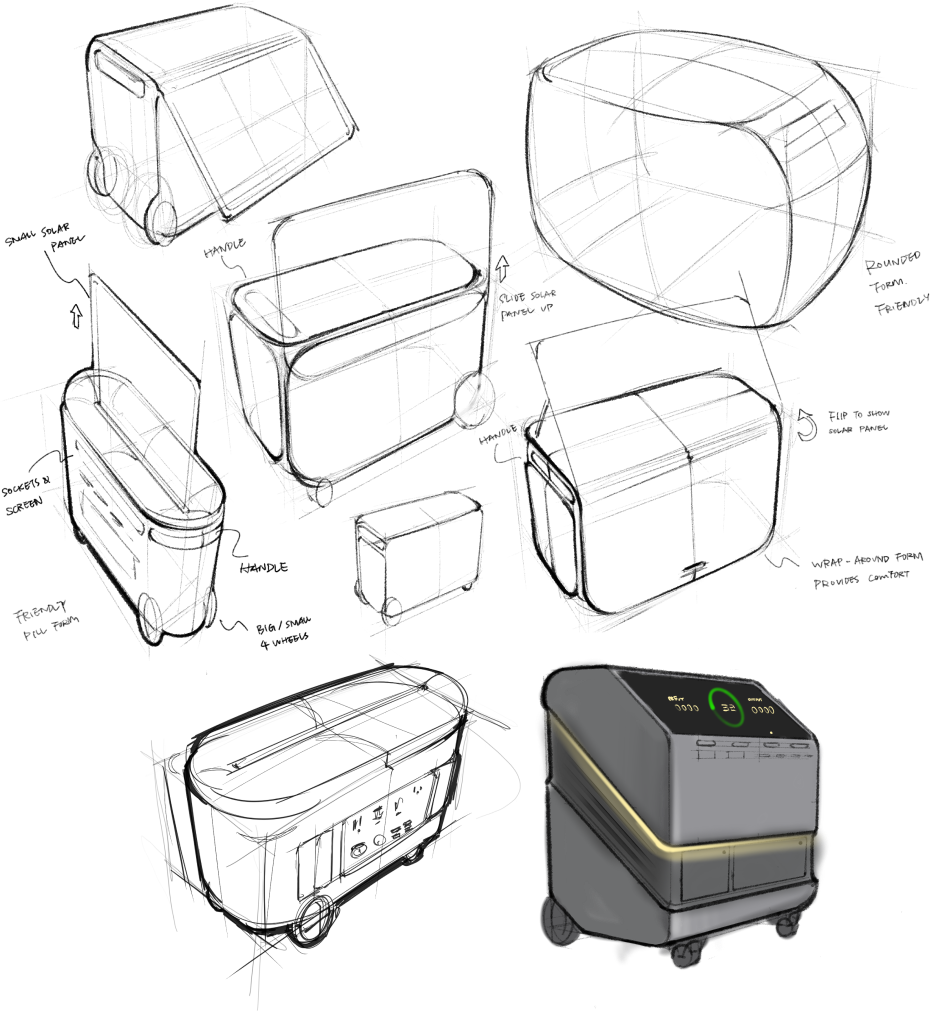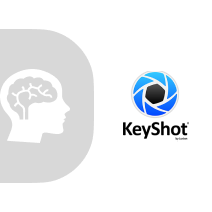HOW IS HATCH DUO
AI-ENHANCED?

- INDUSTRIAL DESIGN
- ENGINEERING
- PROTOTYPING
- BRANDING
- STRATEGY
- PACKAGING
- UX/UI

Refugee charging experience x AI Generated workflow Case Study
As generative AI makes significant inroads into the design industry, Hatch Duo has taken an early and innovative approach to seamlessly integrating generative AI into the industrial design workflow. Our aim is to leverage this technology to enhance creativity and improve work efficiency.
From the initial stages of problem research, fundamental form exploration, and in-depth CAD development to the final concept presentation, we have employed a range of AI tools in conjunction with human intelligence to craft a sophisticated product concept that addresses pressing social issues.
HELIOS is a portable power station designed to assist refugees in securing daily power resources during their immigration journey and while facing temporary living situations. It serves as a power bank to keep phones operational for receiving critical information, a luggage solution to support the transportation of heavy carry-ons during long journeys, a convenient stool for resting weary feet at any location, and an ambient light source to dispel the fear of approaching night.



Throughout the design process, we engaged in a dynamic interchange between generative AI software and human-operated software. This approach allowed us to access a broader spectrum of information and inspiration in a timely fashion.
Our toolkit of AI software comprised ChatGPT, Midjourney, Vizcom, and Photoshop AI generation. Each of these components played a pivotal role in enhancing our understanding of the refugee situation, fostering diverse creative forms that challenged conventional power station design stereotypes, and expediting the generation of in-context final visual representations.
Here is a comprehensive breakdown of our design process:
Discover the current situation + seek opportunities


AI toolkit: ChatGPT
Role: swiftly pinpoint key information through Q&A format, saving time by avoiding irrelevant data filtering
Insights of current refugee status:
Opportunity:

Initial concept AI generation + sketch ideation


AI toolkit: Midjourney
Role: generate images in response to specific prompts, to boost creativity in our initial brainstorming phase
A diverse range of concept images, varying from bold to conventional designs were generated centered around the prompt 'portable power generator with a solar panel, a handle, and wheels.'
Insights: A rounded form would provide a friendly and comfortable experience for the refugee population. It is also easier to protect the edges and corners from collisions and wear, reducing maintenance and thus increasing the product's lifespan.



AI toolkit: Vizcom
Role: generate 3D visual concepts from sketches, enabling rapid testing of various conceptual renderings
By integrating the first round of sketches into Vizcom, we selected our preferred concept, which featured a distinctive 'pill-shaped' design. Its slim profile is designed for portability, and its smooth, rounded curves make it exceptionally user-friendly and aesthetically appealing.
Insights: the bottom lighting made by Vizcom inspired us to envision the power generator's dual purpose as an ambient night light. This innovative feature alleviates the need for refugees to carry flashlights, enhancing convenience and safety.

Further AI modification + CAD development



AI environment visualization + Product Rendering





HI toolkit: Google
Role: provide concrete, real-world data to mirror the social status and validate the opportunities identified
Through actual News and reports, we confirmed the situation of refugees facing power shortages on a daily basis when migrating between temporary settlements.
According to reports from the New York Times, the quest to keep smartphones running pushes migrants to create makeshift charging stations in the unlikeliest of places, with wires snaking out of food trucks, phone booths, or even a busted traffic light.


HI toolkit: Procreate
Role: Digital painting tool for designers to sketch and conceptualize ideas.
With the rounded form as the starting point, we increased the solar panel's light-receiving area and protected it from potential damage during transport. To achieve this, an insertable placement was chosen within the generator, accompanied by a pull-out interaction mechanism.


HI toolkit: SolidWorks
Role: translate the finalized 2D concept into precise 3D models for manufacturing
From final sketching to 3D modeling, we arrived at a feature set that can deliver multiple benefits to the user:


After establishing the design direction, we focused on enhancing aesthetics and user experience by leveraging MidJourney and Vizcom to generate concept images from our 3D models.

AI toolkit: Midjourney
Role: generate photo-realistic backdrop images, to better showcase our design achievements and assist stakeholders in understanding the usage scenarios.
The example here demonstrates how we generated a camping scene to place the product inside as a general consumer electronic device. The solar panel can simultaneously generate power when HELIOS is charging a laptop.
AI toolkit: Photoshop AI Generation
Role: effortlessly rectify imperfections in the images generated by MJ by selecting certain areas in the scene
The example here demonstrates how we selected the area above the table to create a laptop to be powered by HELIOS.

HI toolkit: KeyShot
Role: transform our finished 3D model into photorealistic product images, combined with the generated backdrop images for design visualization

HELIOS not only addresses the issue of power shortages faced by refugees during their migration but also serves as a consumer electronics product with versatile applications in camping, emergency power outages, and various other scenarios.
We have chosen a bright white as the primary color, complemented by a cheerful saffron yellow. Yellow is commonly used in aid organizations' supplies to symbolize positive change within communities. This combination aims to provide emotional value to refugees, offering solace to wounded spirits displaced by adversity.


This case study represents a reimagined workflow that seamlessly integrates generative AI into the creative process. Our objective is not to resist or compete with AI but to actively embrace and leverage it to enhance our creativity. We aim to harness the 'infinite' well of inspiration AI can provide, enabling us to push the boundaries of human imagination within a finite timeframe. By doing so, we enhance the visual storytelling and final presentation, ultimately leading to improved design efficiency.
